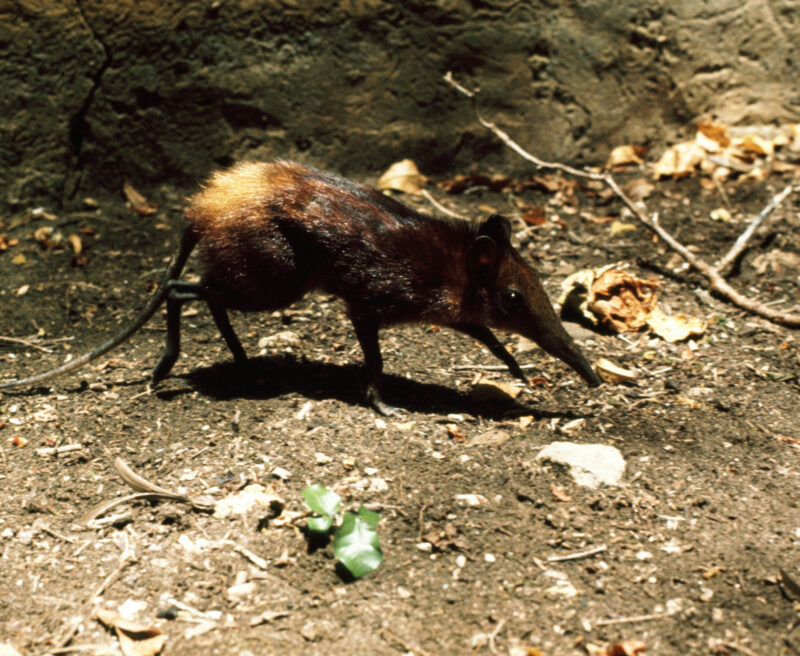Golden-rumped Elephant Shrew
Species Data
Class: Mammalia
Order: Elephant Shrews (Sengis)
Family: Macroscelididae
Scientific Name: Rhynchocyon chrysopygus
IUCN Red List status: Endangered
Description
Golden-rumped Elephant Shrews, in common with all elephant shrews, have long, flexible snouts. They are identified by their bright golden rump and their forehead which is covered by grizzled, stiff gold fur. The feet, ears and legs are black and the sparsely furred tail is predominantly black. All elephant shrews are semi-digitigrade (i.e. walk on their fingers/toe tips). The largest of the elephant shrews, the Golden-rumped grows to a total length 20in (56cm) with a tail of up to half the body length. They live for 4-5 years.
Behaviour
These elephant shrews live in stable, monogamous pairs that change only if one partner dies. They have a territory of around 4 acres (1.7 hectares) and both sexes defend their home range by tail-slapping – where they repeatedly slap the forest floor with their tail and sometimes use their hind legs to slap the ground also. As insectivores they use their long, flexible snout to forage for a wide variety of invertebrates including earthworms, millipedes, insects and spiders. They are diurnal and sleep at night in nests on the forest floor. Nests are constructed every 1-3 days by excavating a hollow in the soil, lining it with leaves and layering over the top with dry leaves. Golden-Rumped Elephant Shrews breed throughout the year, females giving birth to a single young after a 42 day gestation period. The youngster remains in the nest for two weeks, emerging fully weaned, continuing to follows its mother on her foraging runs. It will become completely independent after about 5 days and remains on its parents’ home range until it defines its own range, which is between 5-20 weeks.

Habitat
The Golden-rumped Elephant Shrew, which occurs in the Dakatcha Woodland, has a small range in the moist, dense coastal scrub forest and in lowland semi-deciduous forest along coastal Kenya.
Threats and Conservation
Their main predators are snakes, lizards and birds of prey but by far their greatest threat is loss of their forest habitat.
Protected by these WLT Projects
References
Edge of existence – Golden-rumped Sengi
